FEBRUARY 7, 2024: When growing up in Buffalo, we had some distant relatives that lived nearby that we would visit often – Uncle Harry and Aunt Rose. Uncle Harry was my grandfather’s second cousin. For the past 50 years, their daughter Joyce has been living in Sante Fe, along with her husband Steve. Before he retired, Steve worked in the theoretical physics department at Los Alamos National Laboratory. Over the next two days, we would spend most of our time in Sante Fe with them.
Sante Fe is the state capital of New Mexico. Today was exactly four months since the October 7 massacre in Israel. To mark the day, New Mexico State Senators, together with the Santa Fe Jewish Center (Chabad) were hosting a Day for Israel in the rotunda inside the capitol building. Joyce suggested we start our day together there.

To reach the event, we needed to pass a small pro-Palestinian protest outside the capital building. However once inside, the atmosphere was strongly pro-Israel.
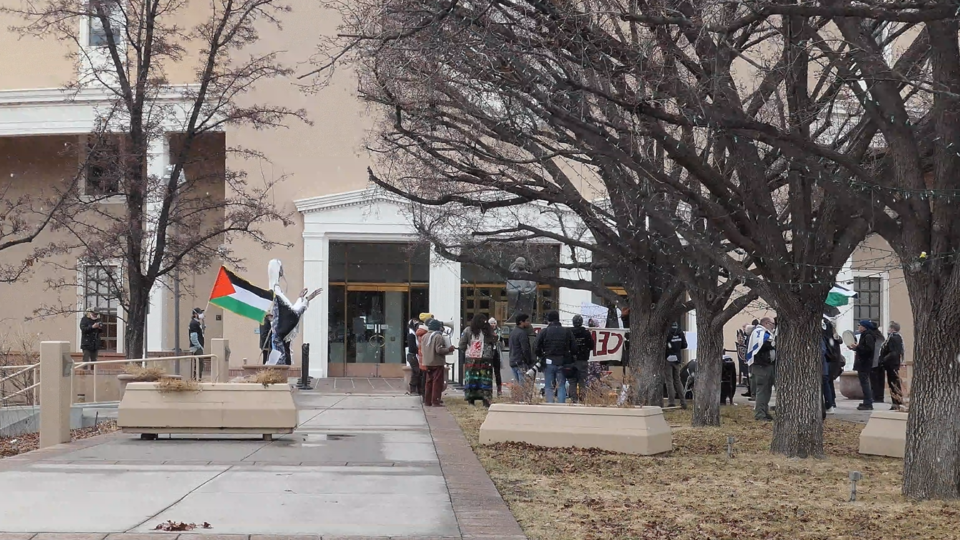
Soon after we arrived, we met State Senator Craig Brandt, the minority whip, who was handing out pins with two flags intertwined – the flag of Israel with the flag of New Mexico. About 100 people were in the audience. Next to the podium, a screen had been set up to continuously display the photos of the hostages.
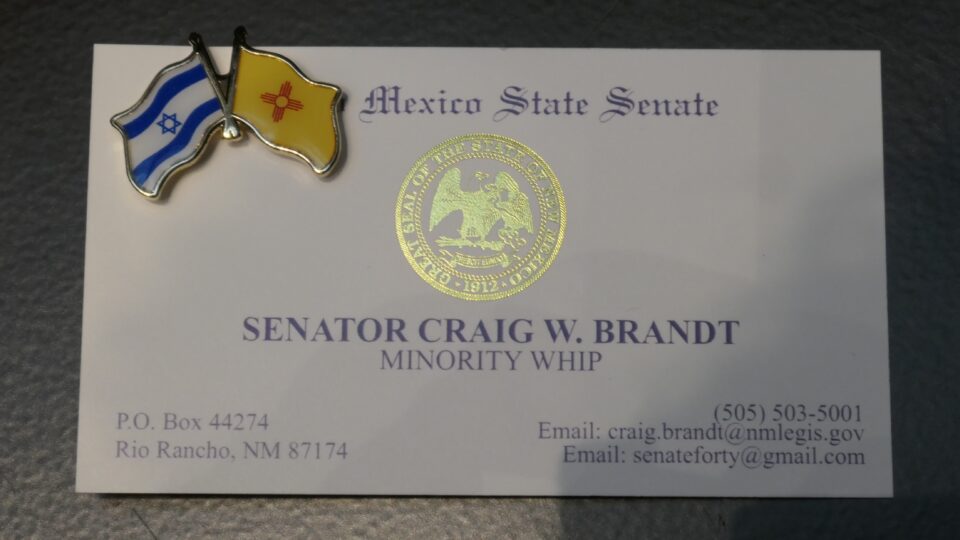
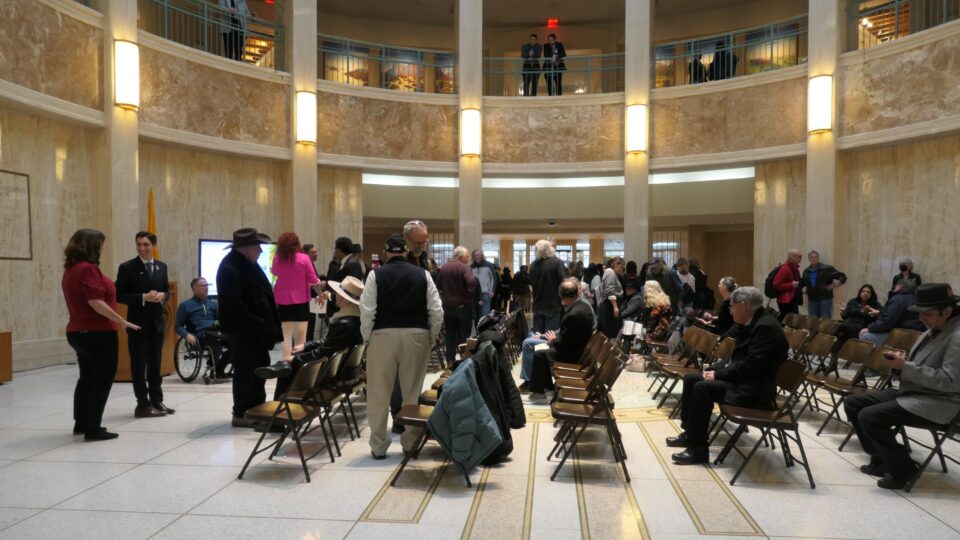
The event opened with a few words by the Chabad rabbi, and then Senator Brandt spoke. Over and over again, he emphasized “We stand with Israel”. He was followed by Jewish State Senator Jeff Steinborn, from Las Cruces, then New Mexico House Representative Rod Montoya. Rep Montoya mentioned that lawmakers introduced memorials in the State House and Senate calling for support for Israel and condemnation of antisemitism but were not even able to receive a hearing. After their speeches, each was given by the Chabad rabbi a hostage necklace to wear. These look like dog tags and are engraved with “BRING THEM HOME. Our hearts are held captive in Gaza”.
It was now the turn of the Chabad rabbi, Rabbi Berel Levertov, to speak. He read quotes from the bible, where God promises the land of Israel to the Jewish people. This was accompanied by enthusiastic shouts of “Yes!” from some in the audience. The event continued with the reading of the names one by one, of all the hostages. Then came three zoom video meetings with people in Israel to thank the community for their support. To end the program, the chaplain of the senate of New Mexico came up to speak and asked all other Christian clergy to come join him. State Senator Brandt, once again came to the podium (turns out he was a pastor before he became a senator). The God-squad, as the chaplain called themselves, lead a prayer. The program concluded with a flutist playing, Oseh Shalom – the Song of Peace.
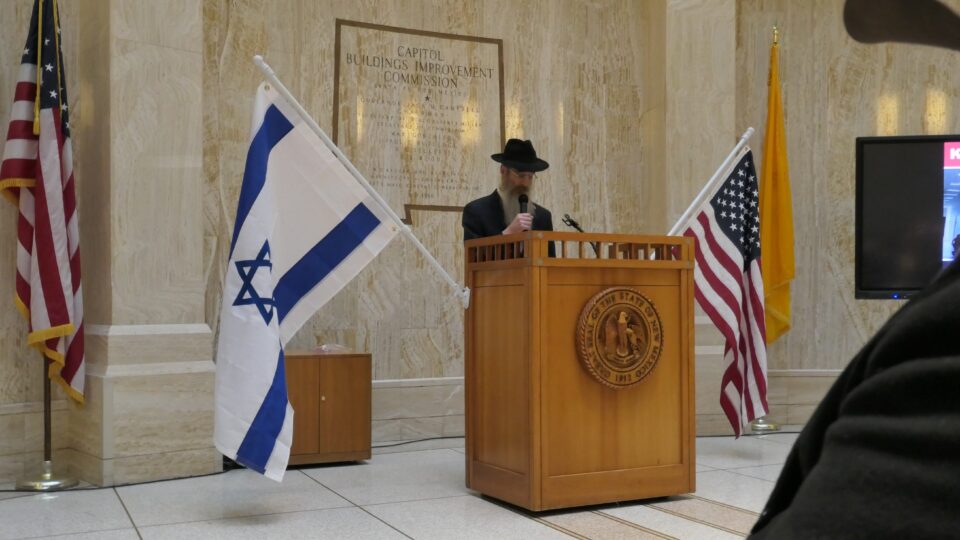
I usually do not participate in political events, and never get sentimental at them. However, here I found myself getting quite emotional, and in these tough times, it was very heart warming to feel such strong support for Israel.
After the event, Joyce and Steve took us for a personal tour of Sante Fe. Sante Fe is unique – not like any other city we have traveled to. It has its own distinct style. Population-wise, it is about the size of my hometown Raanana, about 90,000 inhabitants. While Raanana has many apartment buildings, Sante Fe is the opposite. It is mostly private homes, most of which are built in the pueblo style. The tallest building you are allowed to build is four stories, and there is only one building in the whole city that high – a hotel. Unlike other cities, where the downtown is usually a crowded assortment of tall office buildings visible in the distance, here the downtown is not distinguishable from afar. Sometimes you feel that you are in a nature reserve, rather than in a city. Santa Fe boasts at least six world class museums and an open-air opera venue that attracts many visitors in the summer.
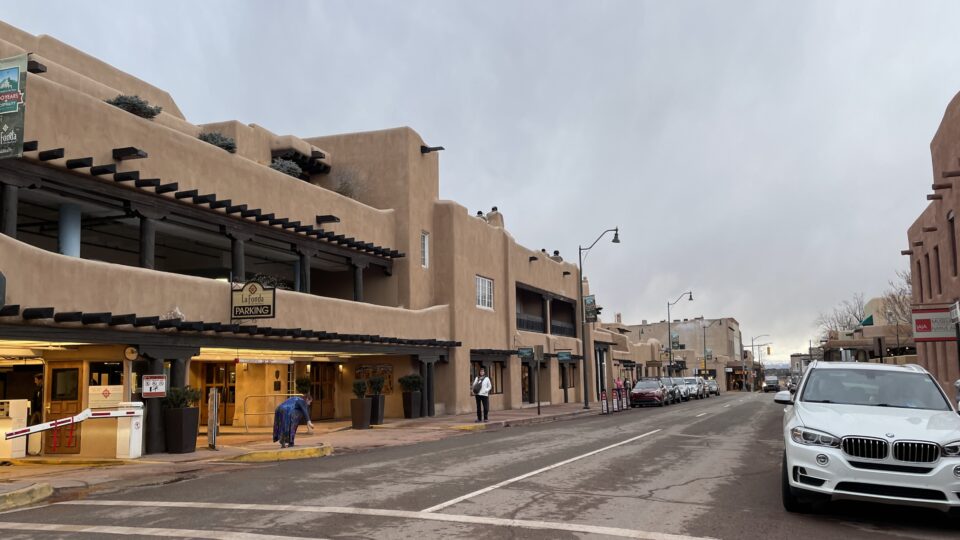
Our first stop in downtown Santa Fe was the New Mexico History Museum. Near the entrance is the gift shop, and what caught my eye right away was a section of books devoted to history of the Jews in the area. Looking over the many books, it seemed that each book could fall into one of two categories – those that talked about the Jewish pioneers (the European immigrants who moved out west, some of whom I mentioned in previous blogs), and the books that were about the crypto-Jews. You cannot speak about the Jewish history of New Mexico without mentioning the crypto-Jews (also known as Conversos), who were actually the first Jews to arrive here.

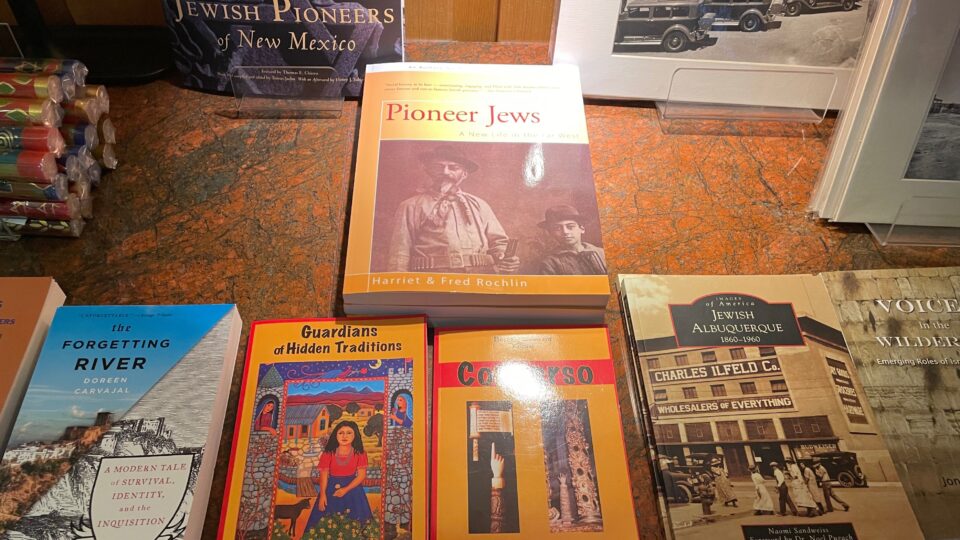
After the expulsions from Spain and Portugal in the 15th century, many Jews outwardly converted to Christianity and continued to practice Judaism secretly. Some of these hidden Jews moved with the conquistadors to Mexico and the Southwest. They did not move here to find religious freedom. This area was still part of the Spanish empire, and the Spaniards brought the inquisition with them wherever they went, including to the New World. Mexico City served as the center of the trials of heresy in this area. The inquisition remained active here until 1820, shortly before Mexico gained full independence.
In New Mexico therefore, it is not uncommon to find among some Hispanics family traditions that hint of a Jewish past – lighting candles Friday night, not eating pork, checking eggs for blood spots, etc. Other Hispanic families have had their Jewish origins confirmed with genetic DNA testing. Genealogist José A. Esquibel claims that of the first 19 families that founded Santa Fe, 11 had Jewish-Converso roots. Today, some of these conversos have embraced their Jewish ancestry and become members of Jewish synagogue congregations.
In addition to the books about New Mexican Jews, inside the museum we found a few displays mentioning some of the Jewish pioneers that played prominent roles in Sante Fe history. These included the Spiegelbergs and the Staabs – family names would we come across over and over again as we travelled throughout the state.
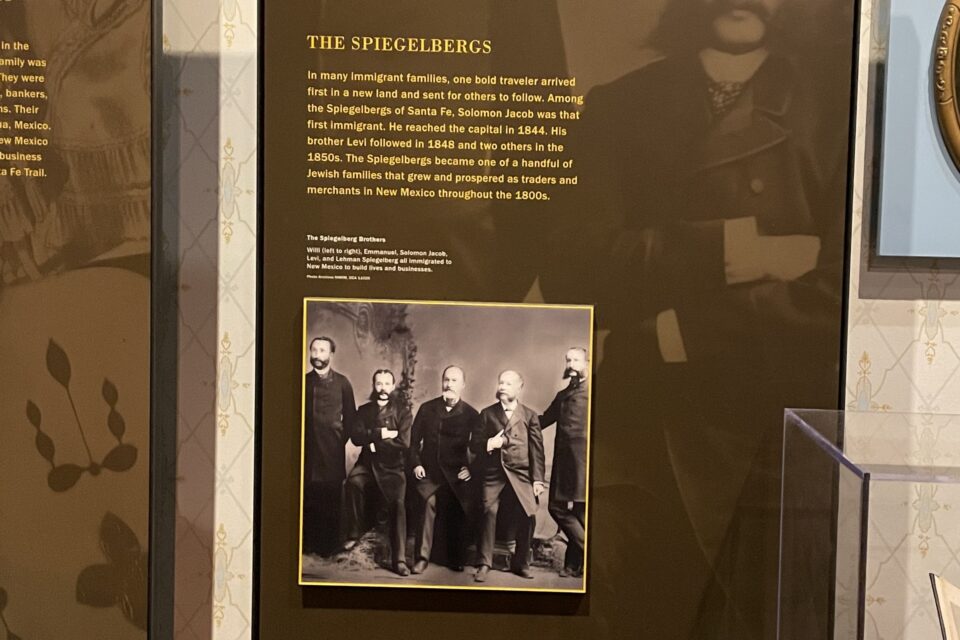
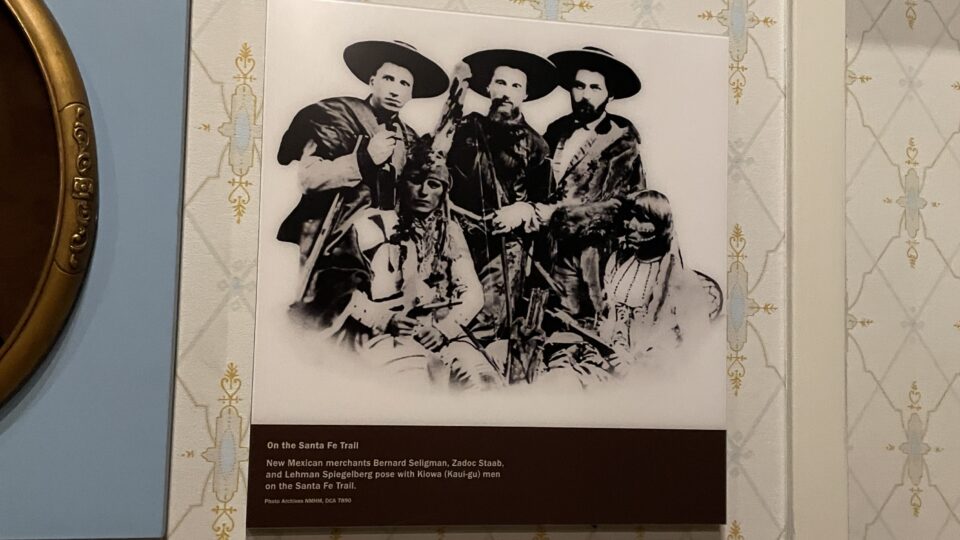
You cannot talk about the history of New Mexico without mentioning The Manhattan Project, and a room of the museum was devoted to it. In the exhibit, one wall featured Oppenheimer.
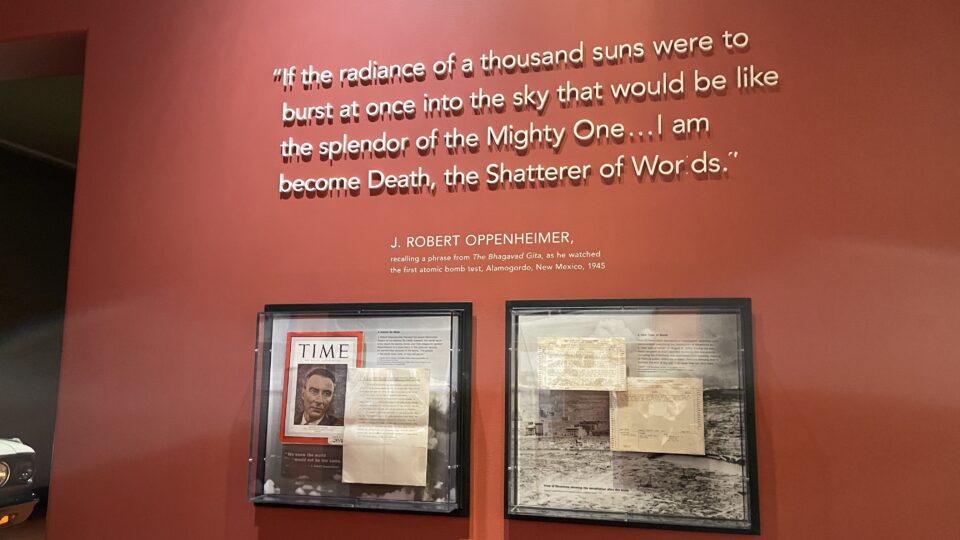
As we were about the exit the museum (through the gift shop, of course), we noticed a plaque near the door about the Spiegelbergs. Turns out that the current gift shop is sponsored by the great-granddaughter of Willi and Flora Spiegelberg. Both Willi and Flora played influential roles in Santa Fe history. Willi arrived in Santa Fe in 1864 to join his brothers in the mercantile business. In time he because the treasurer of one of the local banks, a probate judge and then served as mayor of Santa Fe in the late 1880s. Flora is credited with opening the first son-sectarian school in Santa Fe.
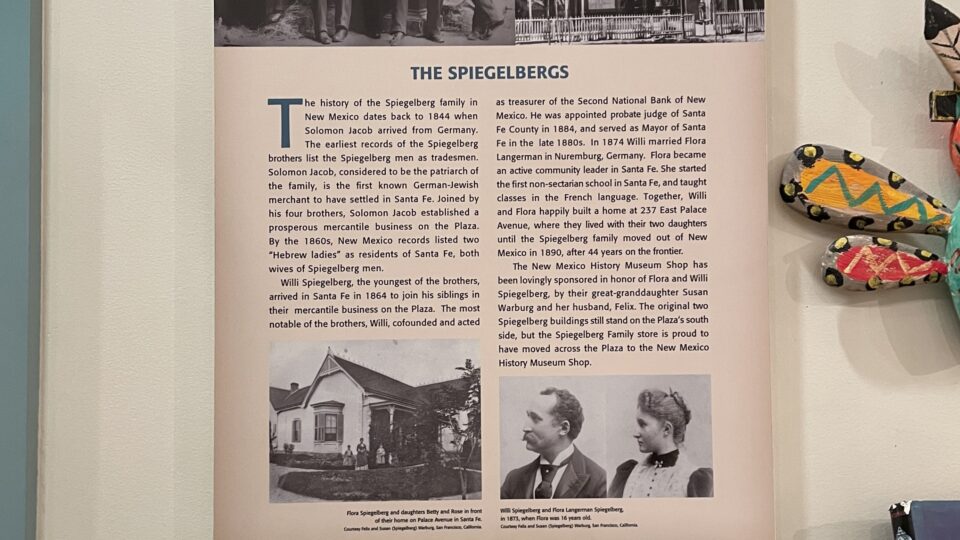
From the museum, we went to the main plaza in Santa Fe. Alongside the plaza is the Cathedral Basilica of Saint Francis of Assisi, or Saint Francis Cathedral as it is more commonly called. The building was dedicated in 1887. The story goes that when it was being built, Jewish merchants in Santa Fe helped fund the building. As a show of thanks, the keystone in the arch above the main entrance contains the Hebrew tetragrammaton (four-letter name of God) carved into it.

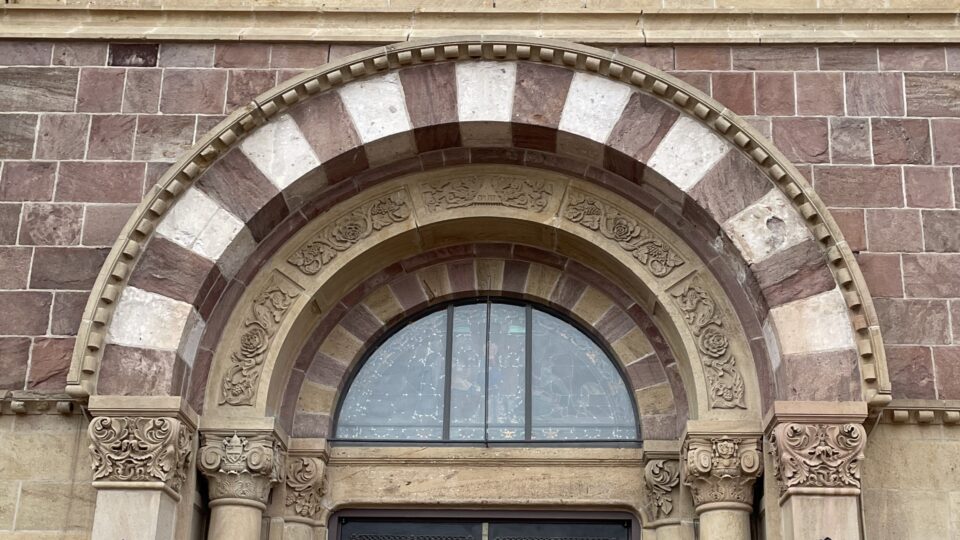
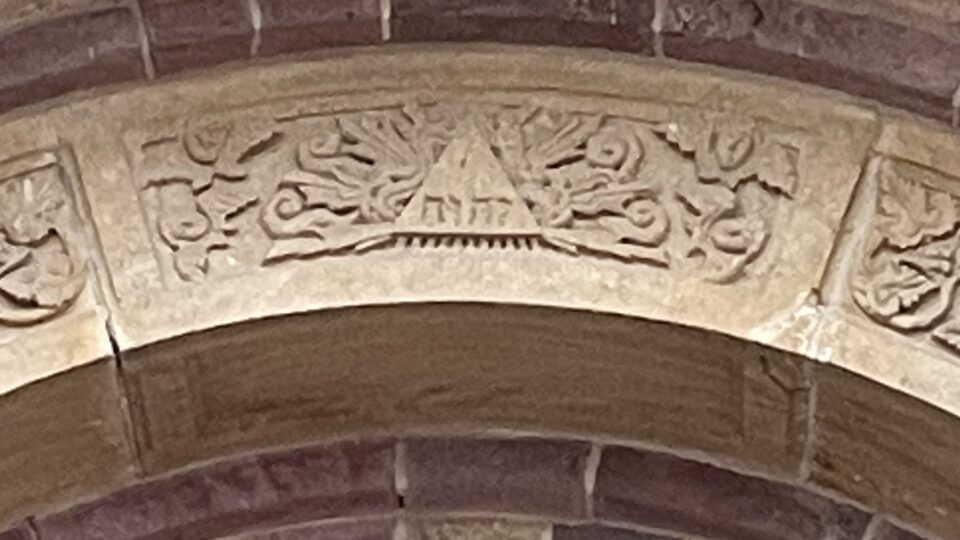
Across the street from the church, was the La Fonda on the Plaza Hotel. This hotel, over 100 years old, was once owned by Fred Harvey. Fred Harvey is credited with creating the first restaurant chain in the United States. His restaurants, placed along the stops of the Santa Fe railway, had tablecloths, china, crystal, and fresh food which brought some elegance to the diners. As part of his marketing genius, he created the concept of Harvey Girls. Harvey Girls were young, intelligent, well-mannered, beautiful women who worked as waitresses in his restaurants and are credited with helping to “civilize the American Southwest”. Their legend grew with the release of the movie “The Harvey Girls” in 1946, starring Judy Garland. In the museum we had just visited, a whole floor was dedicated to an exhibition about them.
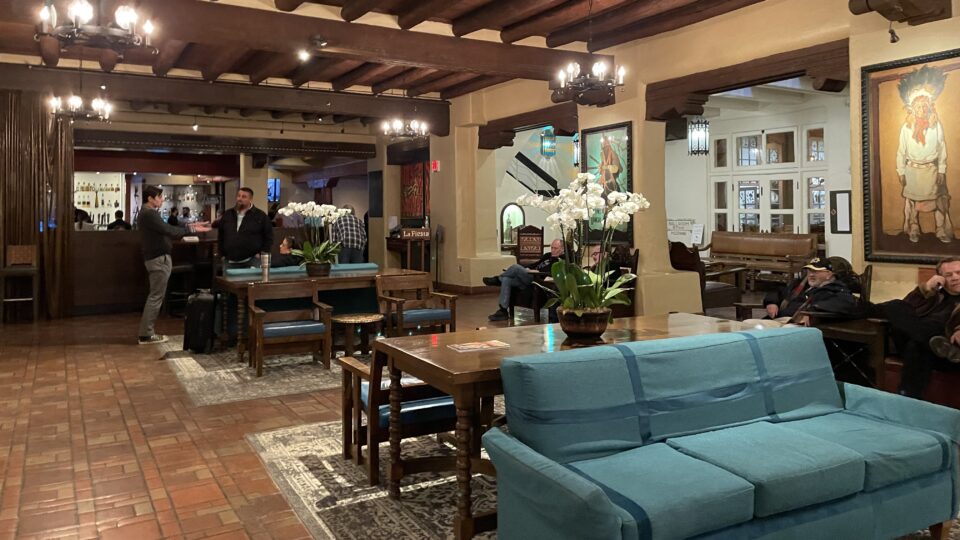
Although Fred Harvey was not Jewish, two of his right-hand men were – Dave Benjamin and Herman Schweizer. These were two Jewish immigrants who provided a big part of the company’s heart, soul and smarts.
Dave Benjamin was in charge of running the day-to-day operations of the Fred Harvey hospitality empire, which at its peak had a staff of 7,000 employees in 80 different location. While Fred inspired them, Dave executed the details.
Herman Schweizer, not only worked for Fred Harvey, but is also mentioned in the New Mexico History Museum in recognition of his large contribution to expanding the appreciation of Native American art. He helped created the Native American jewelry and craft industry, by offering its wares in the Fred Harvey hospitality locations and encouraging the production of those items that sold the most. With his good eye for quality, he was also the man who built the magnificent Fred Harvey collection of Native American art.
In 1968, the Harvey corporation sold the hotel to a prominent Santa Fe Jewish family, Ethel and Sam Ballen, who owned it until 2014. The Board Room in the hotel still holds their name.
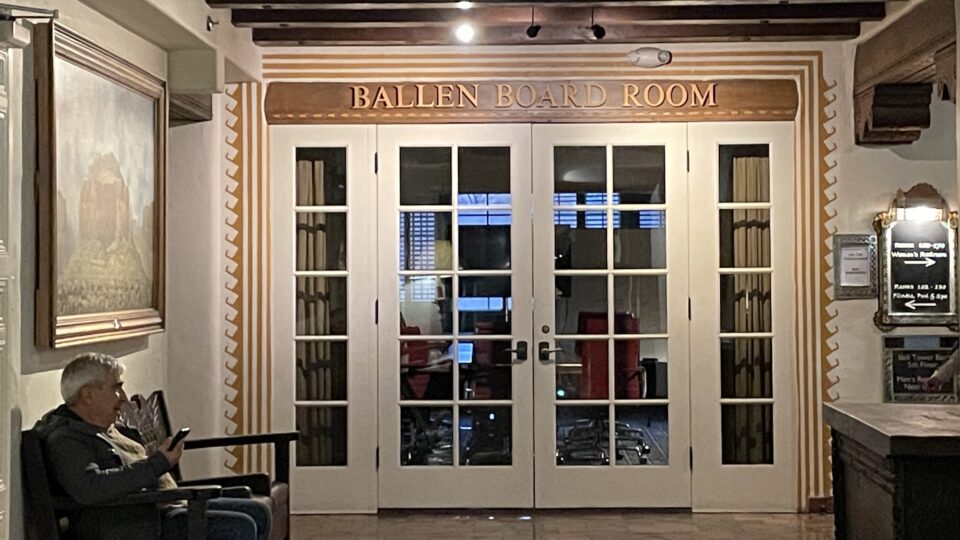
In the lobby of the hotel is a portrait of a former Judge of the New Mexico Court of Appels, Judge Lewis Sutin, known as The Great Dissenter. The painting was placed in La Fonda by his friends, whom he met regularly at the hotel for luncheons where food, wit, wisdom and learning were abundantly shared. The judge’s son, Jonathan Sutin, wrote a two volume book about his father and describes him as “a one-of-a-kind New Mexico gem, whose aim throughout his colorful life was to live and pursue the steadfast Judaic values of justice, fairness, righteousness and concern for the little guy.”
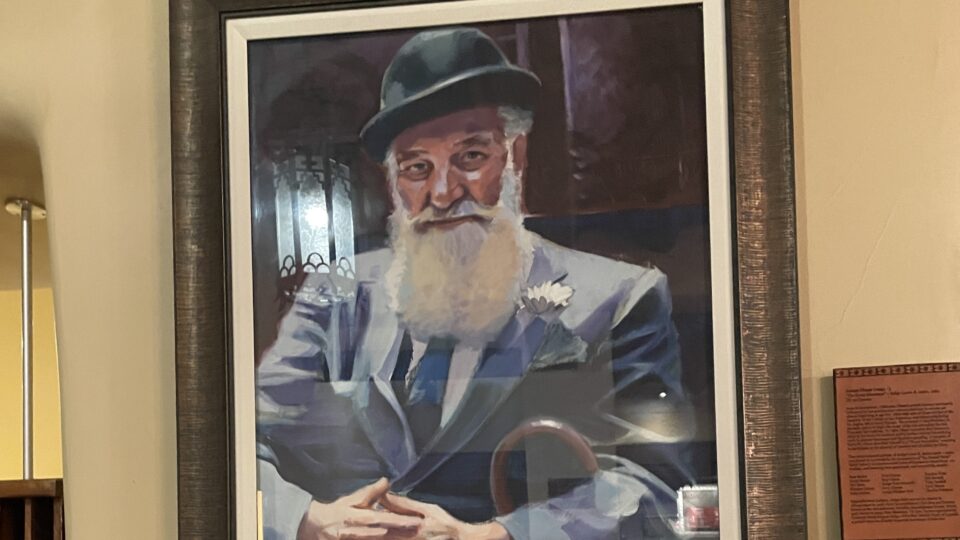

Once back outside, across from the entrance to the hotel, is the Spitz clock. The Spitz Jewelry store, one of the many Jewish owned stores on the plaza, opened in 1881. To advertise their wares, they placed a clock in front of their store. This clock was without an inner working mechanism and was replaced at the turn of the century with a functioning clock. This second clock was knocked down by one of the first motor trucks in Santa Fe in 1915. A new clock was dedicated in 1916 and stood there until 1967. It was then donated to the citizens of Santa Fe and was erected in its current location in 1974. A historical marker near the clock tells of its history.
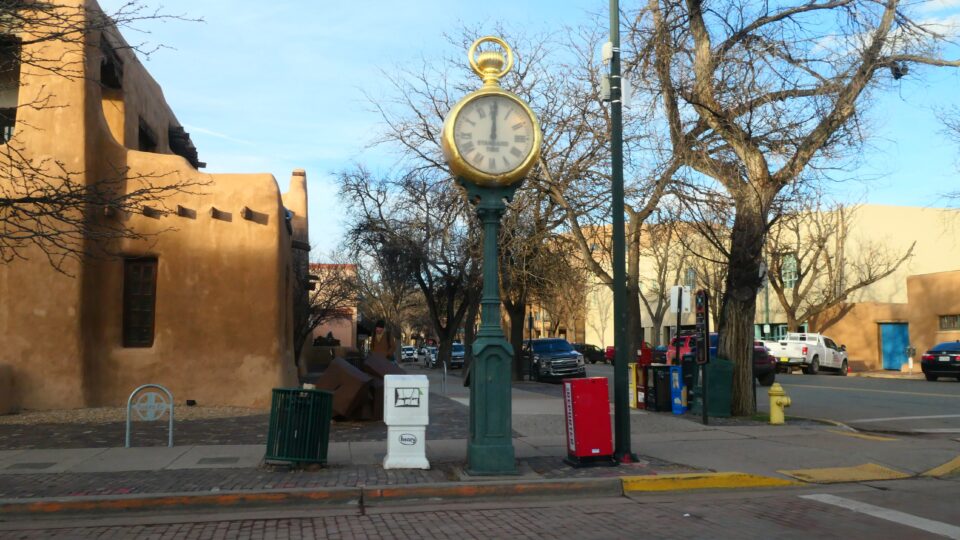
From downtown, we then drove the short distance back to the home of Joyce and Steve where we then spent a couple of productive hours updating each other’s family tree. All in all, it was a very interesting day. It started with hearing from today’s influential people at the State Capital and then learning about many influential personalities from the past. However, best of all, was being with family.
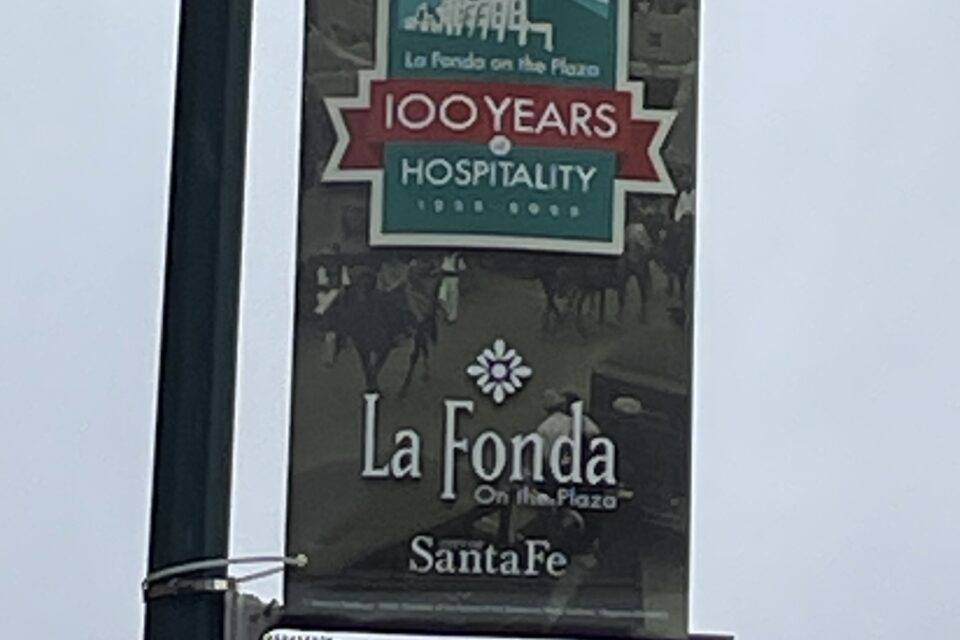
Wow, I had no idea that Spain brought the Inquisition to the New World.
Great post. Very interesting to hear about all the Jewish connections in Santa Fe.